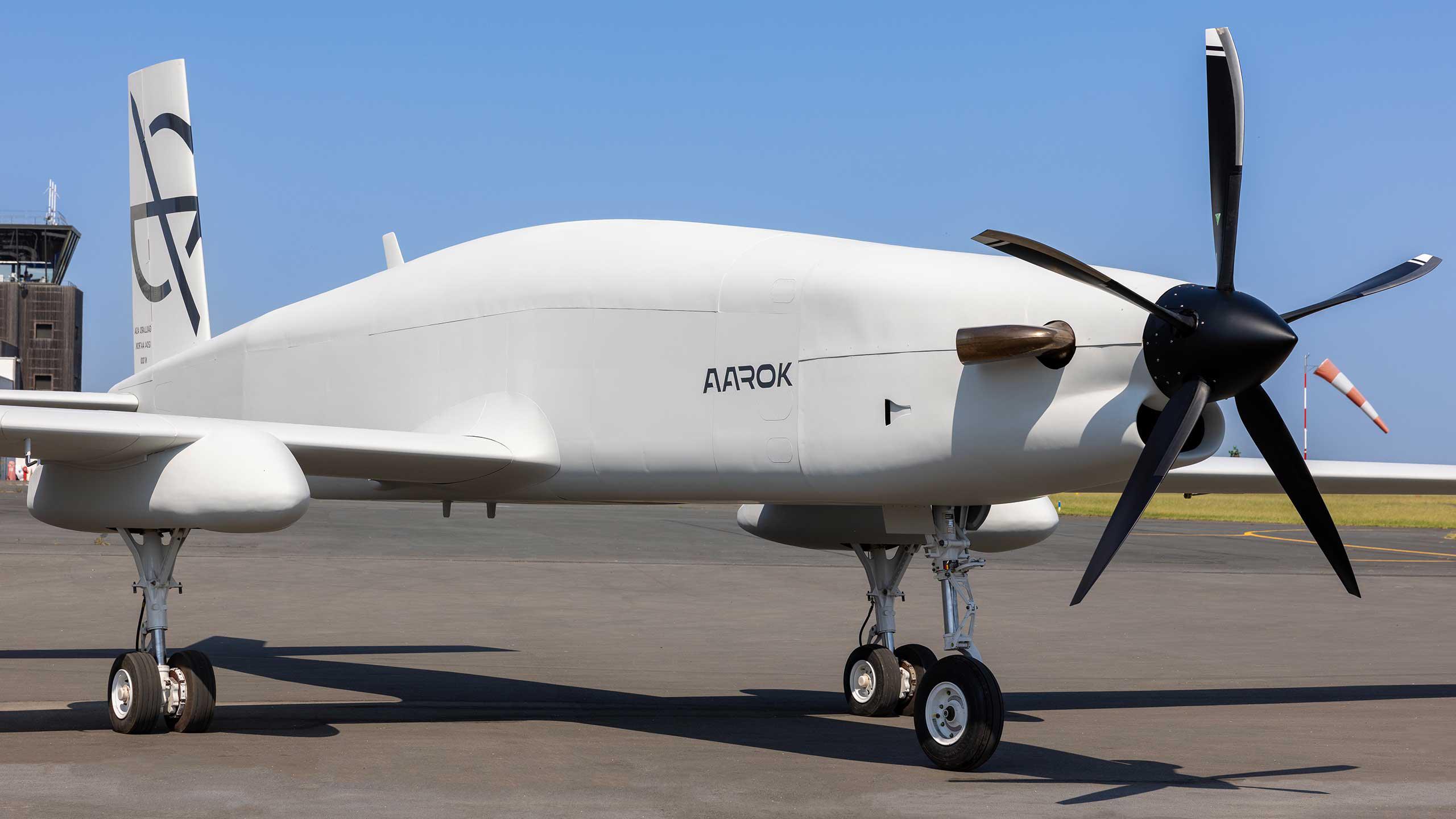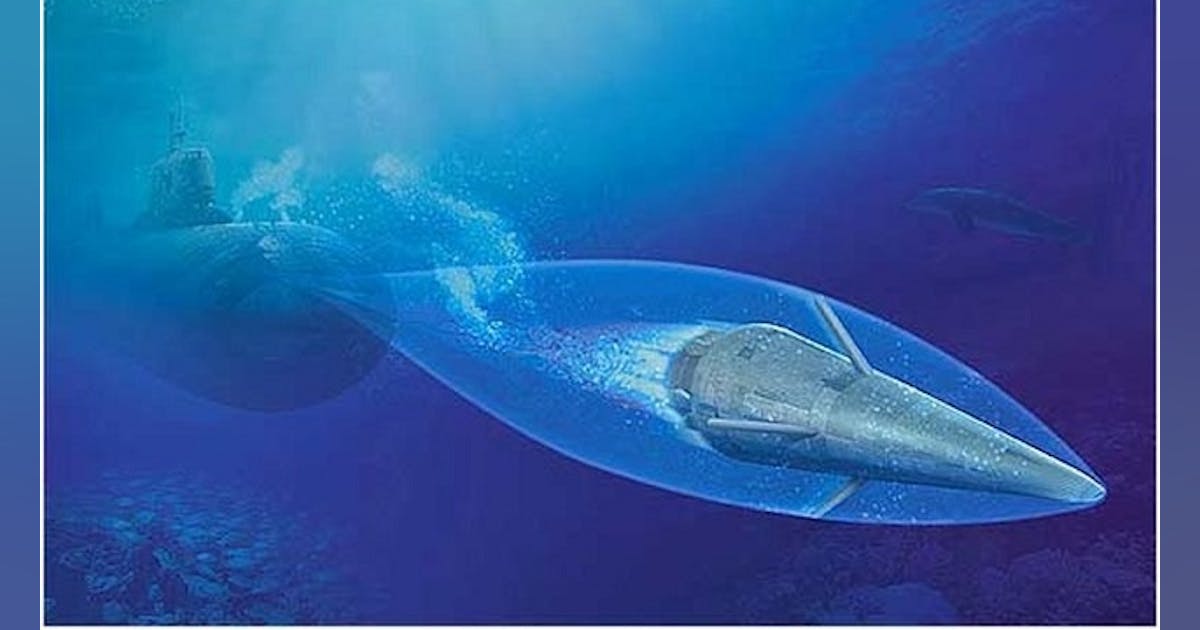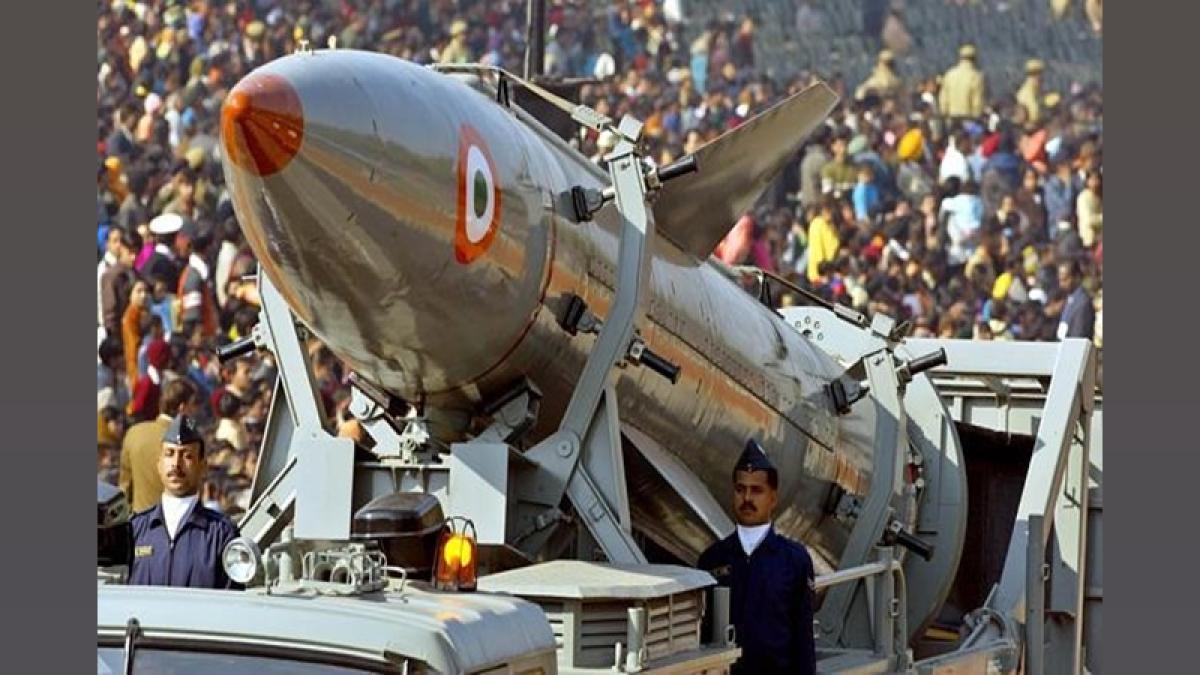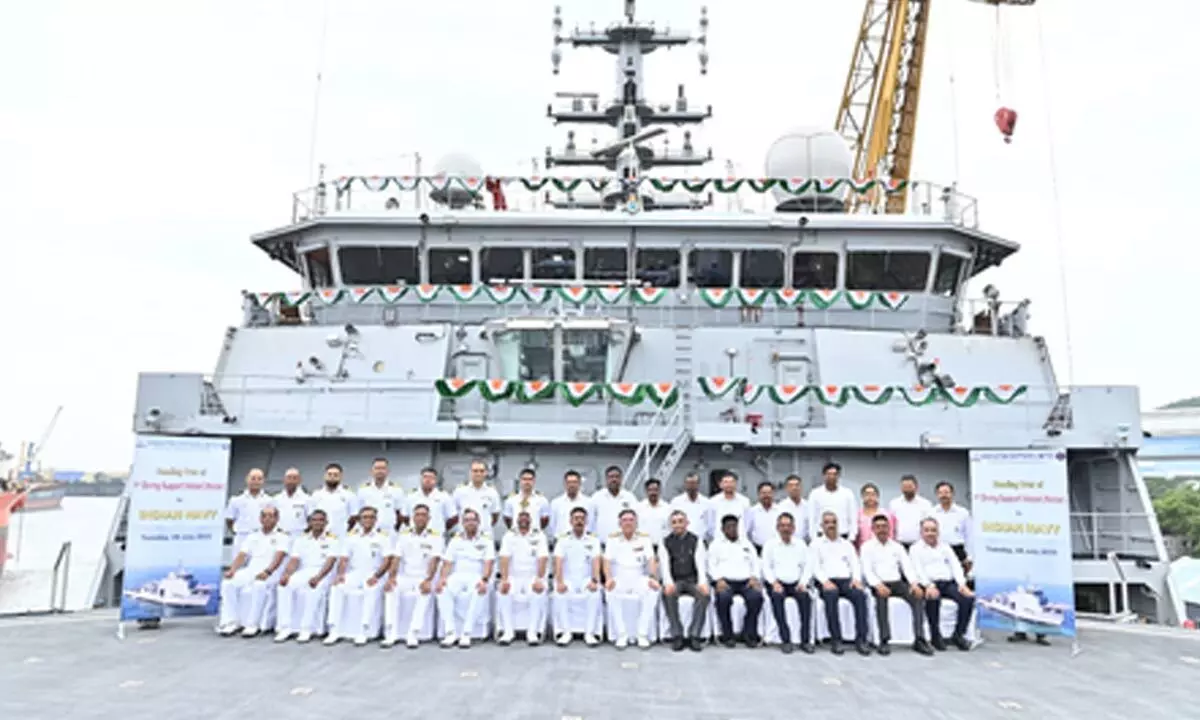SOURCE: IDRW.ORG

In a strategic move to enhance its surveillance and operational readiness, India is accelerating the acquisition of 87 Medium-Altitude Long-Endurance (MALE) drones. These advanced unmanned aerial systems are set to strengthen real-time monitoring capabilities over both maritime and land borders, addressing growing security needs in critical regions.
The MALE drones, designed for intelligence, surveillance, and reconnaissance (ISR) missions, will be equipped with cutting-edge technology to operate effectively across diverse terrains. With a mandated endurance of over 30 hours and a minimum operational altitude of 35,000 feet, these drones will provide persistent surveillance and real-time data critical for national security. Additionally, the drones will incorporate combat capabilities, enabling them to respond to emerging threats swiftly.
Continue readingSOURCE: IDRW.ORG

In a significant leap forward for India’s naval warfare capabilities, the Defence Research and Development Organisation’s (DRDO) Naval Science and Technology Laboratory (NSTL) in Visakhapatnam is developing high-speed supercavitation torpedoes capable of traveling at speeds exceeding 80 knots (approximately 148 km/h). This cutting-edge technology promises to revolutionize underwater combat by enhancing the lethality and effectiveness of the Indian Navy’s submarine and surface fleets, positioning India at the forefront of advanced naval weaponry.
Supercavitation is a phenomenon where a torpedo creates a bubble of gas around itself, significantly reducing water resistance and enabling extraordinary speeds. Unlike conventional torpedoes, which typically travel at 30–50 knots, supercavitating torpedoes operate within a vapor cavity, allowing them to move through water with minimal drag, akin to traveling through air. This technology enables rapid target engagement, reducing the reaction time for adversaries and increasing the likelihood of a successful strike.
Continue readingSOURCE: AFI

Air Commodore (Retd.) Khalid Chishti, a former Pakistan Air Force (PAF) fighter pilot and defense analyst, has claimed that Pakistan will request China to supply its advanced J-20 “Mighty Dragon” fifth-generation stealth fighter if deliveries of the Shenyang J-35A (FC-31 export variant) are delayed, particularly if India moves to procure Russia’s Sukhoi Su-57E before the PAF can induct the J-35A. Speaking to TRT Global, Chishti emphasized that Pakistan has no access to alternative fifth-generation fighters, making reliance on China critical to counter India’s potential acquisition of the Su-57E. This statement comes amid heightened regional tensions following the May 2025 India-Pakistan conflict and reports of Pakistan’s accelerated J-35A deal with China, raising questions about South Asia’s evolving airpower balance.
Pakistan is reportedly set to acquire 40 J-35A stealth fighters from China, with deliveries expected by 2027, as confirmed by Pakistani officials and media reports. The J-35A, a twin-engine, single-seat, multi-role stealth fighter developed by Shenyang Aircraft Corporation, is an export variant of the FC-31, designed to compete with the U.S. F-35. Equipped with advanced avionics, an active electronically scanned array (AESA) radar, and the PL-17 air-to-air missile with a 400 km range, the J-35A aims to replace Pakistan’s ageing F-16 and Mirage 5 fleets, enhancing its air superiority and strike capabilities. Pakistani pilots have been training in China since mid-2024, signaling imminent induction, with Foreign Minister Ishaq Dar finalizing logistics during a post-Operation Sindoor visit to Beijing in May 2025.
Continue readingSOURCE: AFI

British aviation journalist Alan Warnes has stirred controversy with a post on X claiming that he “spoke to Pakistan Air Force Chief ACM Zaheer Ahmed Baber yesterday,” alleging that during the India-Pakistan conflict from May 5-10, 2025, the Pakistan Air Force (PAF) “brought down the IAF’s entire kill chain” by jamming radars, disrupting GPS, and scuttling satellite downlinks, resulting in the loss of four Indian Air Force (IAF) Rafale jets.
The claim, posted on July 9, 2025, has sparked widespread ridicule among Indian netizens, who have labeled Warnes a “PAF propagandist” while speculating wildly about the possibility of a third country—or even Pakistani fratricide—being responsible for strikes on 11 Pakistani air bases during the conflict.
Continue readingSOURCE: AFI

A tragic accident involving an Indian Air Force (IAF) Jaguar trainer aircraft claimed the lives of both pilots during a routine training mission near Bhanuda village in Rajasthan’s Churu district on Wednesday, July 9, 2025. The twin-seater aircraft, which took off from Suratgarh Air Force Station, crashed around 12:40 pm in an agricultural field, causing no damage to civilian property. The IAF has constituted a court of inquiry to investigate the cause of the accident, marking the third Jaguar crash this year.
The aircraft involved was part of the initial batch of 40 Jaguar aircraft manufactured by British Aerospace (BAE) at Warton and delivered off-the-shelf to the IAF in 1980. Commissioned into service in 1980 or 1981, these twin-engine, deep-penetration strike fighters have been a cornerstone of the IAF’s fleet for over four decades. The IAF currently operates around 120 Jaguars across six squadrons, making it the only air force globally to continue using these Anglo-French jets in both single and twin-seat variants. Despite upgrades to avionics and systems over the years, the recent crash has reignited concerns about the ageing fleet.
Continue readingSOURCE: AFI

Rolls-Royce, a global leader in aerospace and marine propulsion systems, has put forward its cutting-edge MT30 marine gas turbine as a prime contender for powering the Indian Navy’s ambitious Project 18-class destroyer program. This next-generation destroyer project is set to enhance India’s naval capabilities with advanced, high-performance vessels designed for multi-role operations in the Indo-Pacific region.
The MT30, one of the most powerful and efficient marine gas turbines in the world, is being positioned as an ideal propulsion solution for the Indian Navy’s upcoming fleet of destroyers. With its compact design, high power density, and proven reliability, the MT30 is already a trusted choice for naval forces globally, including the U.S. Navy’s Zumwalt-class destroyers and the UK Royal Navy’s Queen Elizabeth-class aircraft carriers.
Continue readingSOURCE: AFI

India’s ambitious Zorawar Light Tank program, designed to bolster the Indian Army’s high-altitude warfare capabilities, has reached a significant milestone with the announcement that the second prototype will roll out by the end of September 2025, as reported by Indian Defence Research Wing (idrw.org). Developed by the Defence Research and Development Organisation (DRDO) in collaboration with Larsen & Toubro (L&T), the second prototype incorporates minor changes and improvements over the first, which successfully completed internal trials in December 2024. With the first prototype now ready for user trials by the Indian Army, the Zorawar is on track for induction by 2027, enhancing India’s armored capabilities along the Line of Actual Control (LAC) with China. This development underscores India’s commitment to self-reliance in defence manufacturing under the Atmanirbhar Bharat initiative.
Named after the legendary 19th-century Dogra General Zorawar Singh, known for his conquests in the Himalayas, the Zorawar Light Tank is a 25-tonne platform tailored for high-altitude operations above 4,200 meters, such as in Ladakh and Arunachal Pradesh. Initiated in response to the 2020 Galwan clash, which highlighted the limitations of heavier tanks like the T-72 and T-90 in mountainous terrain, the Zorawar addresses the Indian Army’s need for a lightweight, agile, and powerful armored vehicle. The tank, developed in a record two years, combines a high power-to-weight ratio, advanced firepower, and robust protection to counter adversaries like China’s Type 15 light tank.
Continue readingSOURCE: PTI

The DRDO has significantly advanced India’s self-reliance in defence manufacturing, signing over 2,000 licensing agreements for technology transfer and issuing more than 200 production licenses in 2024, an official said on Wednesday.
The official also highlighted that over 130 industries have been identified as development partners or production agencies in the last five years, bolstering indigenous defence capabilities.
Continue readingSOURCE: IANS

Indian Navy is all set to commission the first of the class Diving Support Vessel (DSV) Nistar at Naval Dockyard, Visakhapatnam on 18 Jul 2025 in the presence of the Hon’ble Raksha Manti Shri Rajnath Singh. The event marks the formal induction of the ship which has been indigenously designed and constructed by M/s Hindustan Shipyard Limited, Visakhapatnam. On commissioning, the ship will join the Eastern Naval Command to support deep sea diving and submarine rescue operations.
?The ship is a testament to the GoI’s resolute focus on nation building through self-reliance in defence production and unwavering focus on Aatmanirbharta. A total of 120 MSMEs have participated in the construction of this ambitious, unique and state-of-the-art vessel, achieving more than 80% indigenous content. The project is a step towards realising the Indian Navy’s vision of designing and constructing complex indigenous platforms.
Continue readingSOURCE: UNI

After about two weeks aboard the International Space Station (ISS), the Axiom Mission 4 (Ax-4) crew has completed close to 230 orbits around Earth and travelled more than 6 million miles. Commander Peggy Whitson, Indian Pilot Shubhanshu “Shux” Shukla, and Mission Specialists S?awosz “Suave” Uzna?ski-Wi?niewski and Tibor Kapu have concluded their final off-duty day today, Axiom Space said in its Flight Day #15 update.
From about 250 miles above Earth, the crew spent their downtime capturing images and video, taking in the view of our home planet below, and reconnecting with loved ones. These moments offer a rare pause in an otherwise rigorous daily schedule.
Continue readingSOURCE: PTI
)
India on Wednesday highlighted recent maritime incidents involving foreign-flagged container vessels operating in Indian waters and urged the International Maritime Organization to review all such incidents, according to an official statement.
Shipping secretary TK Ramachandran, while participating in the 134th session of the Council of the International Maritime Organization (IMO), said recent maritime incidents caused by undeclared hazardous cargoes have raised serious safety concerns.
Continue readingSOURCE: UNI

After evading the police dragnet for 29 years, a key accused in the 1998 Coimbatore serial bomb blasts and communal murder cases arrested by the Tamil Nadu police in Karnataka today. The Anti Terrorism Squad (ATS) of the Tamil Nadu Police have arrested Sadiq @ Raja @ Tailor Raja @ Valarntha Raja @ Shahjahan Abdul Majid Makandar @ Shahjahan Shaik, who was a key accused in Coimbatore bomb blast case and communal murder cases across the State.
Official sources said, acting on specific and credible intelligence, a special team of ATS and Coimbatore City Police arrested the accused at Vijayapura district, Karnataka. The said accused is a native of Coimbatore, he has been absconding for the past 29 years and never been arrested since 1996.
Continue readingSOURCE: PTI

Consultations are underway to draft guidelines for incentivising production of rare earth minerals and magnets to help India reduce dependence on China for these critical inputs used is sectors including telecom and EV, according to sources. Ministries of heavy industries and mines are working on a scheme to boost domestic production of rare earth magnets and minerals, they added. The scheme will be for both private sector as well as public sector undertakings.
In April this year, China, the world’s dominant exporter of rare earth magnets, imposed restriction on shipments of seven rare earth elements and finished magnets, mandating export licences. The revised framework demands detailed end-use disclosures and client declarations, including confirmation that the products will not be used in defence or re-exported to the US. India, which sourced over 80% of its 540 tonne of magnet imports from China last fiscal, has started to feel the impact.
Continue readingSOURCE: PTI

Arunachal Pradesh Chief Minister Pema Khandu has said the next Dalai Lama will be from a free and democratic country and definitely not from China. He, however, said the process of selecting the next Dalai Lama starts only after an incumbent passes away and hoped and prayed the 14th Dalai Lama will live for another 40 years.
“In fact, as I said, His Holiness’ health is very good. And this time too — on the occasion of his 90th birthday celebration — His Holiness said that he will live to be around 130 years old. So we all pray and I am very hopeful that he will live to be 130,” Khandu said in an interview with PTI Videos on Tuesday.
Continue readingSOURCE: PTI

Jammu and Kashmir Chief Minister Omar Abdullah on Thursday said that there is an air of optimism about the revival of tourism in the Union Territory after the Pahalgam terror attack that left 26 people, mostly visitors, dead.
Speaking at a travel and tourism event here, Abdullah said there is hope for a new beginning in J&K with tourism “bouncing back” after the terror attack. “2025 is not an easy year for us. The year can be divided into two parts – before and after the Pahalgam attack. We all see that tourism is bouncing back in J&K. There is a message of hope,” Mr Abdullah said. People of West Bengal are with J&K, he said, adding that the relationship between the two regions transcends over time in the context of “trust and affection”. “West Bengal stood with J&K both politically and economically. We offer adventure and destination tourism. On the ground, there is an air of hope of a new beginning,” the chief minister said.
Continue reading